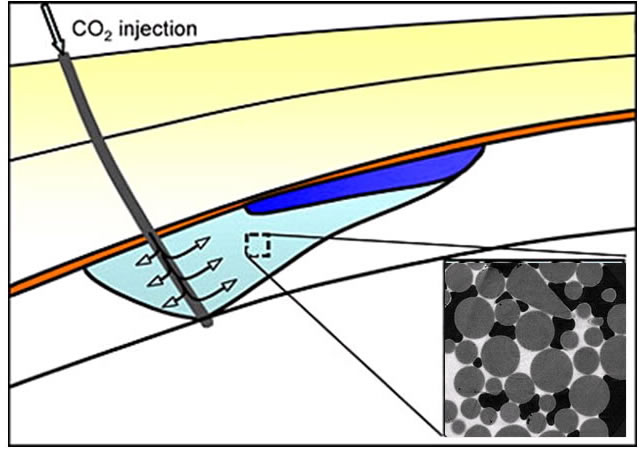 Image modified with permisson from Ruben Juanes, MIT |
|
Collaborators:
Sponsor: RA: |
Bill Carey, Qinjun Kang, and Peter Lichtner Los Alamos Natl. Lab. Charlie Werth and Al Valocchi, Univ. of Illinois. Los Alamos Natl. Lab LDRD Program |
| The prediction and control of multiphase flow and reaction is one of the great challenges in the Earth and Energy Sciences. Multiphase phenomena govern our capacity to remediate environmental contaminants, isolate radioactive waste, effectively extract oil and gas, develop new energy resources (e.g., enhanced geothermal systems or in situ processing of oil shale), and establish the viability of CO2 injection and storage as a means of mitigating the impact of fossil fuel combustion on global climate change. Impending crises in the availability of energy and the accumulation of its waste products require development of game-changing science to allow intelligent engineering solutions. In all of these problems, we seek the capacity to control the flow and reaction of one or more fluids through porous and fractured geologic media. Our contention is that pore-scale processes are ultimately what govern the character of multiphase interactions. The scientific challenge is to design an experimental basis for the development of a computational model that predicts the collective response of the pore-scale system. This is an example of emergent behavior and its response will dictate the success or failure of a multiphase engineering project. Our proposal takes advantage of new experimental and computational methods to obtain in situ, pore-scale observations and develop these with a hybrid modeling approach combining lattice Boltzmann with multi-continuum numerical methods. We will use the CO2-water-rock system to develop these results and simultaneously demonstrate methods of mitigating the very serious problem of global climate change through geologic sequestration of CO2 |